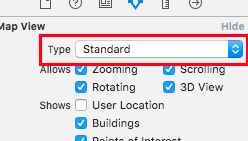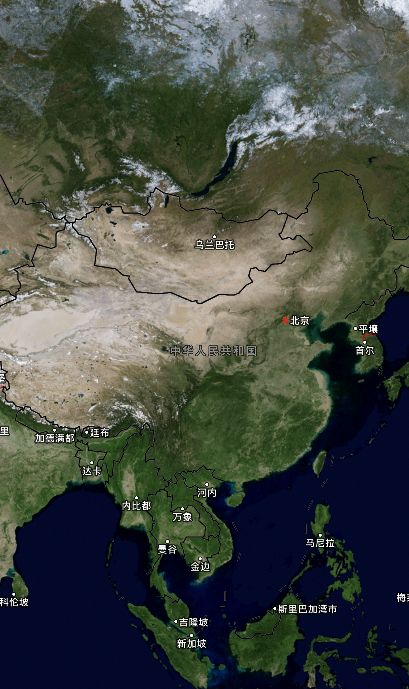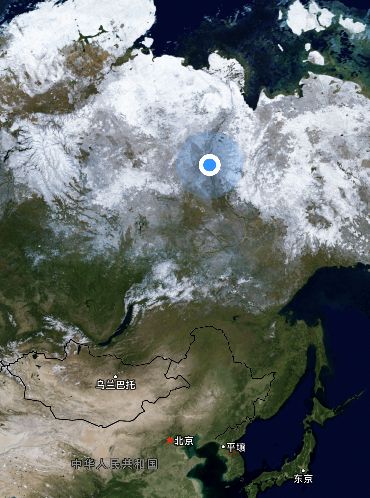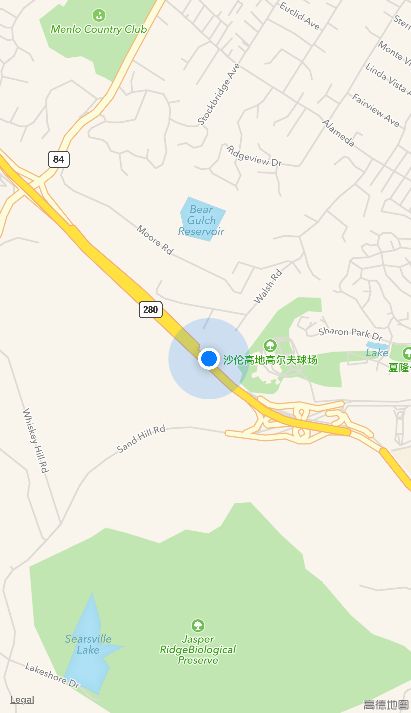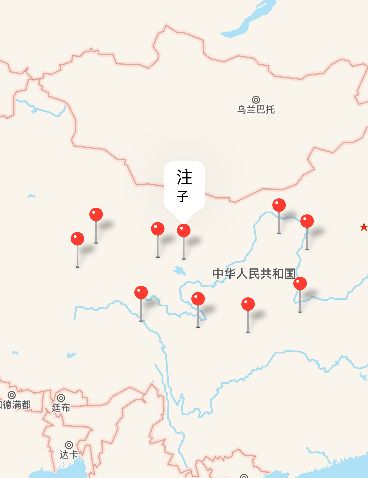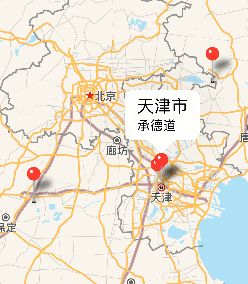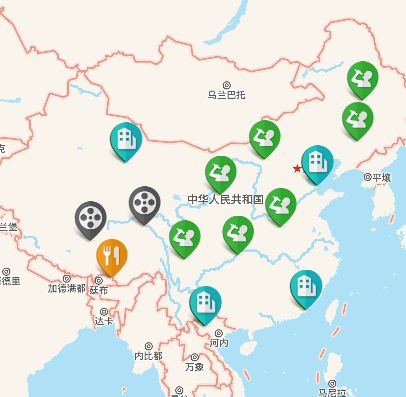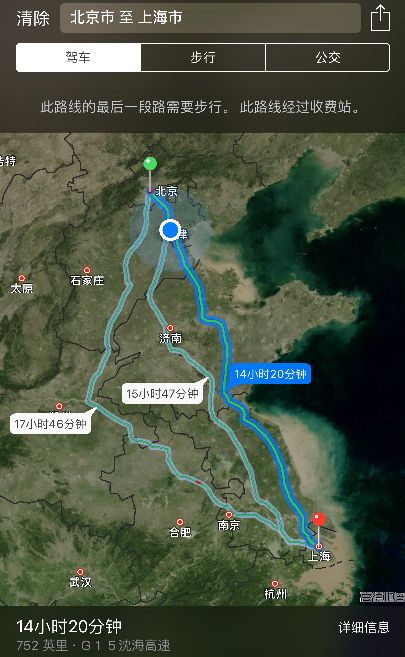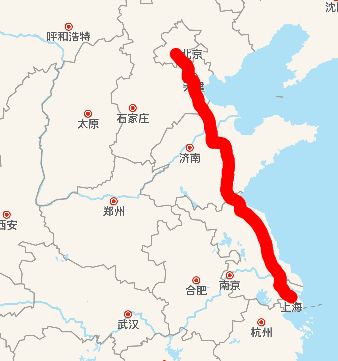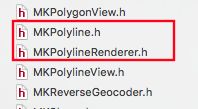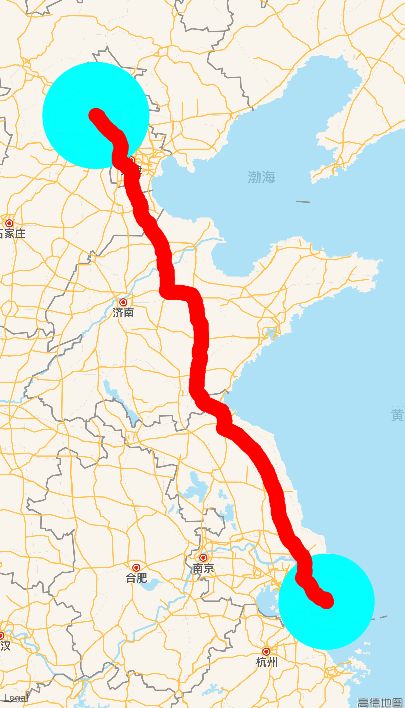MapKit框架使用(初级)
导入框架
导入主头文件
#import
MapKit框架须知
1.MapKit框架数据类型的前缀都是MK
2.MapKit框架有一个比较重要的UI控件:MKMapView,专门用于地图显示
添加地图(storyboard - Map View,代码)
storyboard
可以通过设置MKMapView的 mapType 设置地图类型
代码
先来个属性
@property (weak, nonatomic) IBOutlet MKMapView *mapView;
-(void)touchesBegan:(NSSet *)touches withEvent:(UIEvent *)event
{
self.mapView.mapType = MKMapTypeHybrid;
}
// MKMapTypeSatelliteFlyover
// MKMapTypeHybridFlyover
// 以上两个,只能使用代码实现
也能够实现有无功能及控件,即能否缩放/滑动/指南针/比例尺等,一定注意 属性所对应的系统版本
self.mapView.zoomEnabled = NO;
self.mapView.showsCompass = NO;
self.mapView.showsScale = YES;
设置用户追踪模式
获取用户当前的位置信息。
self.mapView.showsUserLocation = YES;
会获取用户隐私,需要获得用户的授权,请求授权只能在CoreLocation中
#import
@property(nonatomic,strong)CLLocationManager * lm;
-(CLLocationManager *)lm
{
if (!_lm) {
_lm = [[CLLocationManager alloc] init];
//请求授权,做适配
if ([_lm respondsToSelector:@selector(requestAlwaysAuthorization)]) {
[_lm requestAlwaysAuthorization];
}
}
return _lm;
}
//下面方法中调用
[self lm];
好了,在世界地图上找到你的位置,就是闪动的蓝点,不要急,全世界找找
没错,我在西伯利亚,呵呵,你懂的,偶尔出出国
放大一点看看啊,得一点一点放大,好烦啊,有没有快捷一点的方式呢?
//用户轨迹模式 需要获取用户位置,授权。授权方法请看上方
self.mapView.userTrackingMode = MKUserTrackingModeFollowWithHeading;
好了,基本的使用结束了
MapKit框架使用(中级)
让我们进化吧
呵呵哒
查看当前用户位置信息
将视图中心位置调整为用户当前所在位置
现在来调整一下。先设置一下代理,storyBoard里是拖线,代码就不说了。遵循协议
#pragma mark - MKMapViewDelegate
/**
* 更新到位置
*
* @param mapView 地图
* @param userLocation 位置对象
*/
-(void)mapView:(MKMapView *)mapView didUpdateUserLocation:(MKUserLocation *)userLocation
{
/**
* MKUserLocation (大头针模型)
*/
userLocation.title = @"来吧,进化吧";
userLocation.subtitle = @"NO!!!";
// 设置地图显示中心 就是你一点击,你的位置就在屏幕中心
[self.mapView setCenterCoordinate:userLocation.location.coordinate animated:YES];
}
调整当前地图显示区域
好了,现在要改动一下了,
-(void)touchesBegan:(NSSet *)touches withEvent:(UIEvent *)event
{
[self lm];
//获取用户的位置信息
self.mapView.showsUserLocation = YES;
//用户轨迹模式
// self.mapView.userTrackingMode = MKUserTrackingModeFollowWithHeading;
}
-(void)mapView:(MKMapView *)mapView didUpdateUserLocation:(MKUserLocation *)userLocation
{
/**
* MKUserLocation (大头针模型)
*
*
*/
userLocation.title = @"来吧,进化吧";
userLocation.subtitle = @"NO!!!";
//设置地图显示区域
MKCoordinateSpan span = MKCoordinateSpanMake(0.05, 0.03);
MKCoordinateRegion region = MKCoordinateRegionMake(userLocation.location.coordinate, span);
[self.mapView setRegion:region animated:YES];
}
//怎么知道比例是(0.05, 0.03)呢,先把 setRegion: animated:方法注释,调用如下方法,调到适当比例即可
-(void)mapView:(MKMapView *)mapView regionDidChangeAnimated:(BOOL)animated
{
NSLog(@"%f----%f", mapView.region.span.latitudeDelta, mapView.region.span.longitudeDelta);
}
//这个方法用完就注释了
就是下图这样了
大头针的基本使用
来新的了哦
大头针的使用,我们在这里新建一个工具类(继承于NSObject)
// .h
#import
@interface FWLAnno : NSObject
@property (nonatomic, assign) CLLocationCoordinate2D coordinate;
@property (nonatomic, copy, nullable) NSString *title;
@property (nonatomic, copy, nullable) NSString *subtitle;
在控制器中,引入框架(MapKit,CoreLocation),工具类,遵循协议,设置代理(MKMapViewDelegate)
好了,写一个设置大头针的方法,方便调用
//创建大头针数据模型,放在地图上,调用代理方法
- (void)addAnnoPT:(CLLocationCoordinate2D)pt
{
FWLAnno * anno = [[FWLAnno alloc] init];
anno.coordinate = pt;
anno.title = @"主标题";
anno.subtitle = @"子标题";
[self.mapView addAnnotation:anno];
}
添加大头针模型时调用的方法
/**
* 当我们添加大头针模型时调用
*
* @param mapView 视图
* @param annotation 大头针
*
* @return 模型
*/
-(MKAnnotationView *)mapView:(MKMapView *)mapView viewForAnnotation:(id)annotation{
//返回为空,就调用系统默认
return nil;
}
添加大头针
-(void)touchesBegan:(NSSet *)touches withEvent:(UIEvent *)event
{
//1.获取当前触摸点
CGPoint point = [[touches anyObject] locationInView:self.mapView];
//2.转换成经纬度
CLLocationCoordinate2D pt = [self.mapView convertPoint:point toCoordinateFromView:self.mapView];
//3.添加大头针
[self addAnnoPT:pt];
}
标题,子标题写死了,很没意思哎,修改一下,使用反地理编码
//反地理编码
@property(nonatomic,strong)CLGeocoder * geo;
//懒加载
-(CLGeocoder *)geo{
if (!_geo) {
_geo = [[CLGeocoder alloc] init];
}
return _geo;
}
//在添加大头针的方法里赋值
- (void)addAnnoPT:(CLLocationCoordinate2D)pt
{
__block FWLAnno * anno = [[FWLAnno alloc] init];
anno.coordinate = pt;
anno.title = @"注";
anno.subtitle = @"子";
[self.mapView addAnnotation:anno];
//反地理编码
CLLocation *location = [[CLLocation alloc] initWithLatitude:anno.coordinate.latitude longitude:anno.coordinate.longitude];
[self.geo reverseGeocodeLocation:location completionHandler:^(NSArray * _Nullable placemarks, NSError * _Nullable error) {
CLPlacemark * pl = [placemarks firstObject];
anno.title = pl.locality;
anno.subtitle = pl.thoroughfare;
}];
// 添加多个大头针
// self.mapView addAnnotations:<#(nonnull NSArray> *)#>
}
昨天有事离开了,今天继续。
移除(所有)大头针
使用removeAnnotations
-(void)touchesMoved:(NSSet *)touches withEvent:(UIEvent *)event
{
// 移除大头针(模型)
NSArray *annos = self.mapView.annotations;
[self.mapView removeAnnotations:annos];
}
MapKit框架使用(高级)
自定义大头针
还记得上面添加大头针的那个方法 mapView: viewForAnnotation:
不写或者返回值是空的时候,使用的是系统默认的那个大头针。现在模拟一下,当它返回nil时底层是怎么实现的(有助于理解)
在使用UItableView的时候,里面的cell可以重复利用。在这里,大头针也可以重复利用。
-(MKAnnotationView *)mapView:(MKMapView *)mapView viewForAnnotation:(id)annotation
{
//系统默认的大头针视图如下
static NSString * identifier = @"anno";
MKPinAnnotationView * pin =(MKAnnotationView *) [mapView dequeueReusableAnnotationViewWithIdentifier:identifier];
if (pin == nil) {
pin = [[MKPinAnnotationView alloc] initWithAnnotation:annotation reuseIdentifier:identifier];
}
//下面这个方法的作用 -- 如果大头针 pin 为空的话,if中会创建。但是重复利用时候会出现问题(再次从重用池中取时,没有在赋值,会出现混乱),所以要再赋值一次
pin.annotation = annotation;
//温馨的提醒来喽,此时运行,你会发现大头针的提示不会出现。系统默认的属性是NO
// 设置是否弹出标注
pin.canShowCallout = YES;
//更改大头针颜色
pin.pinTintColor = [UIColor blackColor];
//掉落效果
pin.animatesDrop = YES;
return pin;
}
拖拽大头针
(此时要把移动屏幕取消大头针方法注释掉 touchesMoved)
pin.draggable = YES;
自定义大头针图片
//设置大头针图片(系统大头针无效)
pin.image = [UIImage imageNamed:@"category_5"];
但是发现根本没有改变,为什么呢?
如果使用的是系统的MKPinAnnotationView ,父类里设置的东西基本对它无效(图片,标准什么的)。
如果我们要自定义一个大头针,只能使用MKAnnotationView的这样的父类,或是自定义一个继承于他的类。
首先,在大头针模型里加一个字段
/*类型 */
//此处影协成一个枚举为好
@property (nonatomic, assign) NSInteger type;
其次,在addAnnoPT(添加大头针方法)中添加
//图片是1~5
anno.type = arc4random_uniform(5);
-(MKAnnotationView *)mapView:(MKMapView *)mapView viewForAnnotation:(id)annotation{
//直接使用父类
static NSString * inden = @"anno";
MKAnnotationView * pin =[mapView dequeueReusableAnnotationViewWithIdentifier:inden];
if (pin == nil) {
pin = [[MKAnnotationView alloc] initWithAnnotation:annotation reuseIdentifier:inden];
}
pin.annotation = annotation;
//设置是否弹出标注
pin.canShowCallout = YES;
//标注偏移
pin.calloutOffset = CGPointMake();
pin.draggable = YES;
//标注左右视图
UIImageView *iv = [[UIImageView alloc] initWithFrame:CGRectMake(0, 0, 44, 44)];
iv.image = [UIImage imageNamed:@"htl"];
pin.leftCalloutAccessoryView = iv;
UIImageView *ivR = [[UIImageView alloc] initWithFrame:CGRectMake(0, 0, 44, 44)];
ivR.image = [UIImage imageNamed:@"eason"];
pin.rightCalloutAccessoryView = ivR;
//标注视图
pin.detailCalloutAccessoryView = [UISwitch new];
return pin;
}
选中,取消选中的代理方法
// 不选中
-(void)mapView:(MKMapView *)mapView didDeselectAnnotationView:(MKAnnotationView *)view
{
NSLog(@"不选中");
NSLog(@"%@", view.annotation);
}
// 选中
-(void)mapView:(MKMapView *)mapView didSelectAnnotationView:(MKAnnotationView *)view
{
NSLog(@"选中");
}
视图是视图,模型归模型,现在是混在一起了,下去再整理
利用自带app导航
记住MKMapItem,调用[MKMapItem openMapsWithItems: launchOptions:]方法,其他的东西需要什么写什么
//引入框架
#import
该怎么写呢,写一个方法
-(void)beginNavWithBpl:(CLPlacemark *)beginP andEndP:(CLPlacemark *)endP
{
//由于CLPlacemark地标对象中的属性是readonly,所以写出经纬度,就用地理编码
//创建开始的地图项
CLPlacemark * clPB =beginP;
MKPlacemark * mkpB = [[MKPlacemark alloc] initWithPlacemark:clPB];
MKMapItem * beginI = [[MKMapItem alloc] initWithPlacemark:mkpB];
//创建结束的地图项
CLPlacemark * clP =endP;
MKPlacemark * mkp = [[MKPlacemark alloc] initWithPlacemark:clP];
MKMapItem * endI = [[MKMapItem alloc] initWithPlacemark:mkp];
//地图项数组 起点终点啊
NSArray * items = @[beginI,endI] ;
//启动字典 进头文件里自己看吧
NSDictionary * dic = @{
MKLaunchOptionsDirectionsModeKey: MKLaunchOptionsDirectionsModeDriving,
//key-value value不能是基本数据类型啊,只能是对象,包装一下
MKLaunchOptionsMapTypeKey:@(MKMapTypeHybrid),
MKLaunchOptionsShowsTrafficKey:@(YES)
};
[MKMapItem openMapsWithItems:items launchOptions:dic];
}
调用方法
//把这个方法封装,哪需要就在哪调用
-(void)startNav
{
[self.geoC geocodeAddressString:@"北京" completionHandler:^(NSArray * _Nullable placemarks, NSError * _Nullable error) {
// 广州地标
CLPlacemark *gzP = [placemarks firstObject];
[self.geoC geocodeAddressString:@"上海" completionHandler:^(NSArray * _Nullable placemarks, NSError * _Nullable error) {
// 上海地标
CLPlacemark *shP = [placemarks firstObject];
//调用方法(为什么写在这里呢 - 在这里即可以获得起始点的位置,也可以获得终点的位置)
[self beginNavWithBpl:gzP andEndP:shP];
}];
}];
}
了解一下3D视角(sele.mapView.camera)
先建立一个mapView
MKMapCamera * cam = [MKMapCamera cameraLookingAtCenterCoordinate:(CLLocationCoordinate2DMake(39.915168, 116.403875)) fromEyeCoordinate:(CLLocationCoordinate2DMake(39.915168, 116.403875)) eyeAltitude:100];
self.mapView.camera = cam;
地图快照(MKMapSnapshotter) 略
获取导航信息 MKDirections
做一个请求,在请求里告诉它起点和终点,用MKDirections的对象调用方法开始计算导航路线。导航路线的结果是一个response响应,响应里有routes数组,数组里又有一个MKRoute这样的对象,里面又有一些属性。多尽头文件看看,会省力很多。
#import "ViewController.h"
#import
#import
@interface ViewController ()
@property(nonatomic,strong)CLGeocoder * geoC;
@end
@implementation ViewController
- (CLGeocoder *)geoC
{
if (!_geoC) {
_geoC = [[CLGeocoder alloc] init];
}
return _geoC;
}
-(void)touchesBegan:(NSSet *)touches withEvent:(UIEvent *)event
{
[self.geoC geocodeAddressString:@"北京" completionHandler:^(NSArray * _Nullable placemarks, NSError * _Nullable error) {
CLPlacemark * bjP = [placemarks firstObject];
[self.geoC geocodeAddressString:@"上海" completionHandler:^(NSArray * _Nullable placemarks, NSError * _Nullable error) {
CLPlacemark * shP = [placemarks firstObject];
[self getRouteWithBeginPL:bjP andEndPL:shP];
}];
}];
}
- (void)getRouteWithBeginPL:(CLPlacemark *)beginP andEndPL:(CLPlacemark *)endPL
{
MKDirectionsRequest *request = [[MKDirectionsRequest alloc] init];
// 起点
CLPlacemark *clP = beginP;
MKPlacemark *mkP = [[MKPlacemark alloc] initWithPlacemark:clP];
MKMapItem *sourceItem = [[MKMapItem alloc] initWithPlacemark:mkP];
request.source = sourceItem;
// 终点
CLPlacemark *clP2 = endPL;
MKPlacemark *mkP2 = [[MKPlacemark alloc] initWithPlacemark:clP2];
MKMapItem *endItem = [[MKMapItem alloc] initWithPlacemark:mkP2];
request.destination = endItem;
MKDirections *direction = [[MKDirections alloc] initWithRequest:request];
[direction calculateDirectionsWithCompletionHandler:^(MKDirectionsResponse * _Nullable response, NSError * _Nullable error) {
/**
* MKDirectionsResponse
routes : 路线数组MKRoute
*/
/**
* MKRoute
name : 路线名称
distance : 距离
expectedTravelTime : 预期时间
polyline : 折线(数据模型)
steps
*/
/**
* steps
instructions : 行走提示
*/
// NSLog(@"%@", response);
[response.routes enumerateObjectsUsingBlock:^(MKRoute * _Nonnull obj, NSUInteger idx, BOOL * _Nonnull stop) {
NSLog(@"%@---%zd---%f", obj.name, obj.expectedTravelTime, obj.distance);
/********************************我是低调的分割线*****************************************************/
[obj.steps enumerateObjectsUsingBlock:^(MKRouteStep * _Nonnull obj, NSUInteger idx, BOOL * _Nonnull stop) {
NSLog(@"%@", obj.instructions);
}];
}];
}];
}
@end
好了,现在来做一个有意思的,导航线路绘制 MKPolyline
首先,得先有一个mapView。在上面添加覆盖层。
哦,对了,我这个是几个放到一起了,写到现在才想起来,估计到现在也看乱了。。。能看到这里的人,真是抱歉了。
现在在哪添加呢?找到了polyline,就在它下面
在这里有MKRoute对象,遍历出每一条线路
//遵循代理
//导入MapKit框架
-(MKOverlayRenderer *)mapView:(MKMapView *)mapView rendererForOverlay:(id)overlay
{
if ([overlay isKindOfClass:[MKCircle class]]) {
MKCircleRenderer *circleR = [[MKCircleRenderer alloc] initWithOverlay:overlay];
circleR.fillColor = [UIColor cyanColor];
circleR.alpha = 0.5;
return circleR;
}
if ([overlay isKindOfClass:[MKPolyline class]])
{
MKPolylineRenderer *render = [[MKPolylineRenderer alloc] initWithOverlay:overlay];
// 设置线宽
render.lineWidth = 10;
// 设置颜色
render.strokeColor = [UIColor redColor];
return render;
}
return nil;
}
在起点和终点添加圆圈进行标记。首先在获得到起点和终点的地方加入,然后在代理的方法处返回覆盖层。这时不知道你有没有 疑问,为什么代理方法的返回值不是MKOverlayRenderer,而是MKPolylineRenderer(折线渲染图层)。你可以到MapKit框架的.h文件看看
//要加载创建起点和终点的地方啊
MKCircle *circle = [MKCircle circleWithCenterCoordinate:beginP.location.coordinate radius:10000];
[self.mapView addOverlay:circle];
MKCircle *circle2 = [MKCircle circleWithCenterCoordinate:endPL.location.coordinate radius:10000];
[self.mapView addOverlay:circle2];
MKDirectionsRequest *request = [[MKDirectionsRequest alloc] init];

